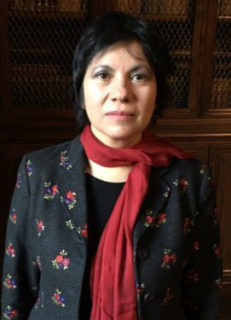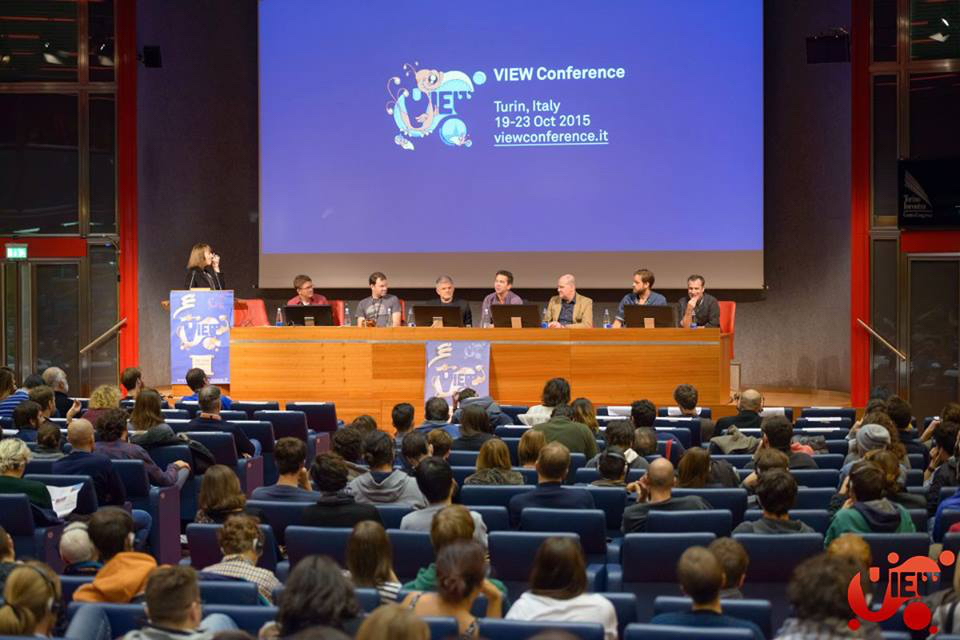A collection of heavyweight creatives from some of the biggest entertainment companies in the world, including Marvel, Lucasfilm, Disney, Pixar, DreamWorks, Warner Bros. and Sony Pictures Animation, is congregating in Turin, Italy from October 24-28. They’re joined by leaders in the virtual and augmented reality fields, including speakers from Google, Baobab Studios and Microsoft. The gaming world will be represented by speakers such as Adam Volker, creative director of Moonbot Studios; Siobhan Reddy, studio director of Media Molecule; Adam Orth, CEO and creative director of Three One Zero; and Daryl Anselmo, art and creative director at Zynga.
The occasion is the VIEW (Virtual Interactive Emerging World) Conference, which celebrates computer graphics, interactive techniques, digital cinema, computer animation, gaming and visual effects. The conference will feature a new exploration of virtual reality and augmented reality, as well as lectures, meetings, exhibits, screenings and demo presentations.
Some of the big names flying in from Hollywood include Zootopia director Byron Howard, Storks producer Brad Lewis, Trolls directors Mike Mitchell and Walt Dorhn, and Sausage Party co-director Conrad Vernon. They are joined by Lucasfilm’s CTO, Rob Bredow.
Maria Elena Gutierrez, director of the VIEW Conference, explains to [a]listdaily how the event has grown over the past 16 years in this exclusive interview.

Can you talk about the genesis of the VIEW Conference?
It was founded in 2000 by a group of academics and practitioners in the field of computer graphics and initially known as Virtuality Conference. Soon after, it was re-branded as VIEW Conference. VIEW is an acronym, which means Virtual Interactive Emerging World. It underlines a larger thematic perimeter, open to all the facets of digital technology applied to images.
What is your audience for this conference?
Professionals, researchers, students and innovators who use and develop computer graphics and digital media applications and technology from not only Italy and Europe, but audiences from around the world.
How have you seen the size and attendance of this conference grow since inception?
We’re proud that it has grown steadily through the years into an internationally recognized conference. Our share of international participants has regularly been growing over the years.
How does the global nature of game development and filmmaking influence the types of speakers you attract to this event?
We invite speakers from around the world. Because so many of the major motion pictures and the new technologies originate in the US, many of our speakers come from there. But the overall idea is to establish a truly global meeting place to share different experiences.
How has the reality of virtual reality being in homes now impacted the scope of VIEW?
Except for Google Cardboard and 360-degree experiences, virtual reality is more of a promise than a reality in homes, at least as of right now. At VIEW, we have speakers who are working on a wide range of VR applications—VR films, games and medical applications—and those taking a broad overview to help people understand where VR is now, how it might evolve and how it might impact them professionally and personally.
Turin, Italy isn’t top of mind when you think of virtual reality. What type of VR industry and VFX infrastructure is there?
There are some, but not many, VR developers in Turin. We have a slightly larger visual effects scene in Turin, and a much larger computer graphics industry, given the important presence of design firms in the area. Turin, in fact, has been and still is an important information and communications technology center. A number of relevant innovations were born here in the last few years, including the MP3 standard and the Arduino platform. So, it would make sense for Turin to be a more important center for VR and digital media. We have excellent universities—including the best technology university, the Politecnico—and technical schools. Italian artists and designers are lauded throughout the world. And, we have VIEW, the largest computer graphics conference in Italy, and one of the best in Europe.
How have you been able to attract so many Hollywood creatives to Italy?
My guess is that they want to introduce their work to European audiences, and that they have heard from their colleagues that the VIEW Conference is amazing, inspiring, and well worth their time.
One of the things that makes the VIEW Conference unique is the participation throughout the week by the speakers, whether keynote speakers or those giving talks. The conference is organized so that the speakers can attend most of the talks as an audience member, and they do, which provides a depth of interaction among speakers and audience members that’s unique.
Also, it isn’t difficult to convince people to come to Italy.
How are the VFX and VR industries learning from each other?
To me, VR has grown from visual effects, but this is more of a question for people in those industries than for me to answer. You might find the talk by Lucasfilm’s CTO Rob Bredow on the work being done at ILMxLabs particularly interesting. He would be an especially good person to answer that question.
How are you integrating game developers into this conference?
We have game developers giving talks and offering workshops, as well as joining a bootcamp with investors. There is clearly a growing interaction between the VR and the gaming scene.
How is game engine technology like Unreal Engine 4 and Unity 5 impacting VR beyond even games and entertainment?
Obviously, developers use game engines for VR applications and some studios use game engines for pre-visualization. We have two speakers coming from Epic Games, Luis Cataldi and Sjoerd De Jong, who will address this question in two workshops and one talk.
How are you seeing traditional entertainment learn from game design in VR?
It’s a big question that should begin with, “Are traditional entertainment studios considering game design for VR, or are they finding other ways to move traditional forms of storytelling into VR?” It’s a provocative question that many of our speakers will be considering in various ways and I hope we can all find some answers during the conference.
Can you talk about the scope of your gaming talks beyond traditional “entertainment” games?
We have speakers offering applications in neuroscience and medicine, where gaming is becoming one of the emerging therapies for behavioral and cognitive problems.
How have you seen storytelling evolve in virtual reality even at this early stage?
I agree that VR storytelling is in its infancy. We have several speakers addressing this question and bringing examples: Maureen Fan of Baobab will look at storytelling in VR and show that studio’s short film, Rob Bredow will show ILMxLab’s experiments with cinematic VR, Luke Youngman and Felix Massie will show Google Spotlight Stories, Tuna Bora will talk about the short film, Pearl. Each of these speakers will offer different types of VR storytelling from those that involve the viewer in some interactive way to those that are more narrative.
How do you see VR evolving over the next five years?
My job is not to be an expert in virtual reality, but to have an open mind, to keep my eyes open, and then to bring experts to VIEW for everyone to learn from, including me. Please come to Dr. Greenberg’s keynote talk. He will be addressing what it takes to make VR real.
What role does mixed reality/augmented reality play in your conference?
Other speakers might address this, but I would recommend Rob Bredow’s talk about the work going on at Lucasfilm’s ILMxLab in particular.
How do you see lessons learned in VR applying to AR?
Again, I’d like to suggest that you come to Dr. Greenberg’s keynote talk. If there are lessons from VR to be applied to AR, he will most likely address them. I believe he considers VR to be part of a larger whole that includes AR.

